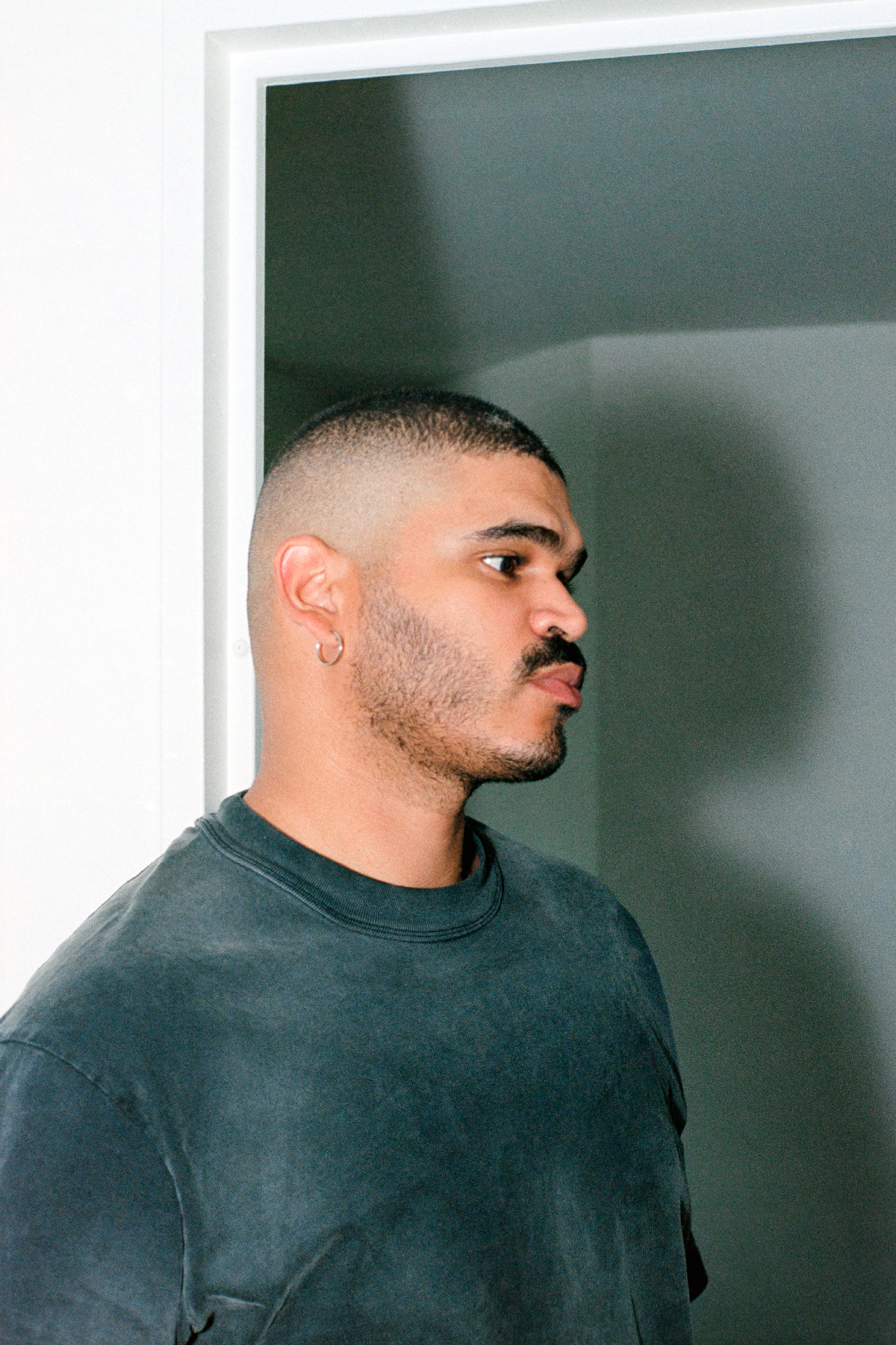The French Moroccan artist on the art of weaponised language, self-definition and disidentification
“My story is one of translation. My parents speak Arabic to me, I answer in French. I understand Arabic, but it’s like the language is sleeping inside me until I’m in Morocco. Then suddenly I remember: I do speak it.” For French Moroccan multidisciplinary artist Tarek Lakhrissi, this duality – this negotiation between languages and identities – shapes how he creates art. His exploration of North African diasporic identity and queer visibility in France is defined by this sense of translation: finding a way to communicate and exist in between worlds.
Language is at the core of Lakhrissi’s practice, which spans video, installation, performance, poetry and drawing. Reflecting on this and his upbringing in an immigrant family in Châtellerault, the Paris-based artist says: “Words can feel like arrows – when you’re named in a certain way, with slurs against your religion, your skin colour.” This sharp understanding runs through his work, which uses imagery of knives, distorted arrows and spears to speak to the complex, often painful process of self-definition.
His images are metaphors: tools for survival but also markers of something deeper. “For a while, I was very focused on defence,” he admits. “You have to control your space, understand your world. That’s survival.” Growing up in France meant learning to navigate a hostile landscape. “You need strategies to exist if you don’t present like the dominant archetype; if you’re queer, a woman, racialised, non-binary,” he says of the pressures of cultural conformity.
“My work is a way of saying – take up space, don’t shrink"
For Lakhrissi, language became a source of trauma as well as a tool for navigating power. “The more I learned how to speak ‘correctly,’ the more presentable I became in dominant spheres,” he admits. Language allowed him to become a chameleon that could move between different spheres: “I used one voice for my mother, another for my friends, another for institutions. It’s shape-shifting.” This linguistic dexterity then took on new shapes. “Eventually, I fell in love with words. With poetry. With how conversations can change you,” he says. “I see dialogue as a political tool. The more you connect with people, the more empathy you develop.”
This tenderness toward language and its transformative strengths reveals the emotional core beneath Lakhrissi’s journey. Language, once a weapon, has now become a site of healing, connection and resistance. In his video-poem ‘Hard to Love’ he reimagines it as a form of reclamation, asserting not just a will to survive, but to thrive in the face of erasure and marginalisation.
But it’s not just about the words we speak, it’s about the stories we tell, and how we tell them. “I’m suspicious of the word ‘identity,’” Lakhrissi says, pointing to the ways in which the term has been commodified. “I care more about fluidity, spirituality, and about asking, ‘what’s your story?’” This question runs through all of his work, where the stories of queer, diasporic, and marginalised bodies are told as complex, multifaceted tales of reinvention.
“I see dialogue as a political tool. The more you connect with people, the more empathy you develop"
Cultural theorist José Esteban Muñoz defines disidentification as a strategy for marginalised individuals, particularly queer people of colour, to subvert cultural norms. Lakhrissi’s art embodies this concept, using weaponised imagery to challenge labels imposed on him. His work creates alternative ways of being that resist dominant norms. His refusal to conform and his reimagining of how diasporic queer lives are told is itself a powerful act of disidentification, offering both resistance and the possibility of something radically different.
“Take up space,” he urges, a simple yet powerful mantra that underpins much of his practice. Whether through the weapon imagery in much of his earlier work or the sci-fi, dreamlike quality of his more recent projects, Lakhrissi’s art demands bandwidth to breathe. “I love the idea of disidentification. I used it in the ‘RISING’ project at the Centre Pompidou in Brussels. I became this giant angel character on a billboard in an area known for its Moroccan and Muslim communities. It was a way of saying – take up space, don’t shrink.”
If Lakhrissi’s younger years were driven by the need to protect himself, his practice evolved, and so did his relationship with defence. “The next step after defending yourself is allowing yourself to be happy,” he explains. “To just be.” This shift is central to Lakhrissi’s work, where the sharpness has softened into something more speculative. In his short film ‘Out of the Blue’ he imagines new futures where queer, diasporic bodies are flourishing. “I’m more interested in dreaming,” he says, “in imagining other narratives.” This turn isn’t escapism, it’s creating space for joy and radical possibility.
These days, Lakhrissi’s works have joined the collections at Defares, Fondazione Sandretto and CNAP and he teaches at Zurich University of the Arts, plus he’s just wrapped a group show at Perrotin Paris. Yet in an era where voices such as his are louder than ever, Lakhrissi’s work continues to be a reminder that visibility is not just about being seen. It’s about how we choose to see ourselves, and how we dream ourselves into new worlds. “That’s what I want to say to diasporic people now: you don’t have to follow the path they gave you. I was supposed to be a footballer or a dealer. I glitched the system. I became an artist.”






